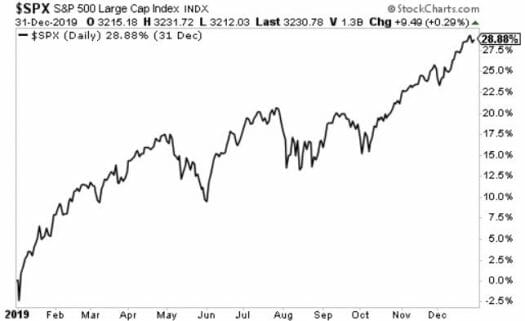Too Much Risk In Your Portfolio? Here’s A Simple Solution…
When something shocking happens in our lives, it can make us introspective. It can also shine a light on the precious nature of time.
For me, one of those moments was when I watched my neighbor get carried away in a body bag. She wasn’t very old, maybe in her early 40s. And she sadly died alone.
Of course, it doesn’t have to be as dramatic as death. It could be the loss of a job, a divorce, or a sudden financial failure that makes us stop in our tracks and reflect on our lives and situation.
I realize this is an odd way to start things off, but it’s good to occasionally take a step back and see the bigger picture. As we strive for success in trading or life, we mustn’t lose sight of what is truly important to us.
Understanding The Nature Of Risk
Everybody assesses risk differently. But the truth is, when it comes to investing, most of us are pretty bad at it.
Longtime readers know that I talk more about risk management –avoiding losses –more than I do about finding that next big winner.
The reason is simple. If you take too big of a loss, you won’t have enough capital for that next big trade.
That’s why I’ve previously discussed the importance of trading rules and sell signals. They curb your risk and keep losses small — but only if you use them. I’m convinced that most investors could improve their performance dramatically by simply getting out of losing positions early.
Today, I want to talk about a risk that can easily creep up on us, especially when the market is doing exceptionally well.
You see, we never seem to realize that it could all be over in a flash.
To understand what I’m talking about, think back to 2019. The S&P 500 returned nearly 30% that year. Nearly everything you touch has a good chance of making money when you have a year like that. And that was certainly true for us over at Capital Wealth Letter.

When the market does this well, we become overconfident. Every investor thinks they are a genius. And that confidence can lead to some very critical mistakes.
Among those mistakes: Sometimes, we invest too much money into one position.
How The 2% Rule Can Help…
I get it. The rush you feel from placing a big bet can be exhilarating. You may not be thinking that you’re gambling at the time. But more often than not, that’s exactly what is happening.
When things are going well, we don’t consider the potential consequences.
When we experience success, we feel tempted to inch up our allocation with every trade. We put all our eggs in one basket pretty soon, believing our winning streak will continue.
Now, that can work well when times are good. But think about that chart of the S&P in 2019. Remember what happened just a few short months later? The Covid-19 pandemic happened.
We all know what happened next. As the market went into a nosedive, some stocks held up better than others. Others were decimated. But like the driver who gets stopped for speeding, some of us learned our lesson, but most of us didn’t. It wasn’t long before many investors thought they were geniuses as the market went into a furious rally again.
That’s where the “2%” rule comes in.
This refers to the amount of your portfolio you should allocate to each trade. Why 2%? Well, without getting into too much detail, that’s what studies have shown is the sweet spot — it can produce meaningful returns without breaking your portfolio if things turn sour.
It allows you to live to fight another day in the event you find yourself with a total dud. It’s a pretty good rule of thumb to follow.
Closing Thoughts
I’ve been around the markets for a long time. I’ve traded everything from equities to cryptos to futures and more. Take it from me… I’ve been a victim of this line of thinking. And I assure you, the market will quickly humble you if you’re not careful.
When the market is doing well, don’t let the winning go to your head. You will inevitably make a losing trade once in a while. Keep your allocations in check. With each trade, just assume you may lose money going into it. If you can’t stomach that, you need to lower your allocation. That’s where the 2% rule can help.
Remember, it’s not how much money you make. It’s how much you keep. Don’t let one trade blow up your account.
Editor’s Note: As long as you understand how to risk and allocate properly, there’s nothing wrong with dedicating a portion of your portfolio to investments with home-run potential.
That’s where our latest briefing comes in…
Our team thinks a select few cryptos are about to go on another monster run. So if you missed the boat on previous big rallies, you can still profit. To learn more, go here now…
